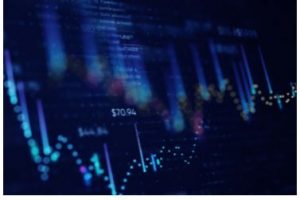Quotational Period: the time period during which the average price is established — typically a calendar month. This price is then used to calculate the value of payable metals contained in base metal concentrates such as copper, gold, lead, silver and zinc.
The calendar month that is used to calculate the Quotation Period price varies depending on the quality, quantity and logistical requirements of the concentrates, and can also be determined by the business strategy of the buyer.
Physical hedging: buying or selling physical material to match the pricing of future production and sales.
Types of Buyers
Buyers can either be a processor of the concentrates such as a smelter and refinery, or a financial intermediary such as traders.
Using the Quotational Period for profit
The business strategy of both types can often be the same but traders have an additional business strategy available to them. When there is a quotational period option in the buyer’s favour this can be leveraged to maximise the buyer’s profit with negligible price exposure risk.

Using Quotational Period for Price Risk Management
Using a known quotational period, many smelters, refiners and traders physically hedge against this price exposure risk by matching the quotational period for raw materials such as concentrates with the quotational period for high grade or refined metal for a smelter. If the buyer, smelter or refinery does not physically hedge against the price exposure risk, they have the option of either hedging using financial instruments or accepting the risk through speculation.
Use a future quotational period for pricing helps to reduce price risk for both types of buyers during the time it takes to:
- smelt and refine the concentrates before selling the high grade or refined metal
- sell the concentrates to a buyer — such as a smelter or a refinery
A commercial marketing contract or purchase agreement for a base metal concentrate such as copper, lead or zinc contains a wide range of commercial, logistical and legal clauses. These clauses exist to protect the interests of both the buyer, seller, and their agents, while at the same time providing a clear document to manage the transfer in title and risk of the concentrates. The agreed quantity can be delivered in one or more independent shipments — sometimes over a number of years or the life of a mine.
Generally speaking, these contracts are written in pragmatic and plain English so as to provide a working document that is used to manage the commercial relationship between the parties. This is very important because typically, such agreements are also frequently referred to by non-legal professionals — individuals with backgrounds in Financial Analytics, marketing or logistics.
In order to ensure that the correct value is calculated for each shipment and that transactions run smoothly, payments are made on schedule and with a minimum amount of fuss.
The clauses in a purchase contract can be grouped into a number of categories: legal, payment, shipping, price determination, quotational period and quantity determination. Below are some questions to consider when making a contract to ensure that all potential concerns have been considered in advance.

Legal
- Who are the parties in the contract?
- What is being agreed in principle?
- Who is buying and who is selling?
- What are the specific terms and how will they be interpreted?
- How can a party default on their obligations and what happens then?
- When does the title and risk pass from buyer to seller?
- What happens if an unexpected or uncontrollable event occurs?
- If any disputes arise, how will they be resolved?
- How can parties transfer their obligations to a third party?
- How will the parties communicate to manage the agreement?
- Which jurisdiction’s law will be used in the event of a dispute?
- How will information be governed, respected commercially and kept confidential?
Payment
- When does the Seller receive payment?
- What documentation does the Seller have to furnish?
- How is the provisional value calculated?
- What happens if the prices used to calculate provisional value change significantly?
- When are a re-measurement of trade receivables and a repayment required?
- When is the final payment made?
Shipping
- What is the size of each delivery?
- Where shall the material be delivered?
- What are the required characteristics of the vessel to be used?
- What, if any, are the restrictions at the loading or discharge port?
- How shall a suitable vessel be nominated and approved?
- Which party will pay for loading, shipping and unloading expenses?
- How will the time spend loading and unloading be calculated?
- Who will compensate the vessel for delays in loading and unloading?
- Is there an agreed shipping or delivery schedule? If so, what is it?
Price Determination
- What is the core transaction or typically the “what” and “where”?
- For the sake of clarity, what technical terms or units need to be defined?
- What currency is used for payments?
- What metals are payable?
- Are there any minimum or percentage deductions?
- What official metal price is used?
- What happens if the official metal prices cease to exist?
- Are there any penalty elements?
- Is there a penalty charged and at what level of impurity does it apply?
- Is there a treatment charge?
- What official metal price is used to calculate the treatment charge?
- How does the treatment charge modified with changes in the official metal price?
- Which party will pay export and import taxes, tariffs or duties?
Quotational Period
- What official metal price is used to calculate the value of the concentrate?
- How long is the quotational period?
- Is there a quotational period option? If so, in whose favour?
- When does it have to be declared?
- How frequently can it be declared?
- Is it determined by the price curve of the official metal price?
Quantity Determination
- How will the final wet and dry weight be determined?
- What shall be the same size?
- How many sets of samples?
- Who retains the samples?
- How will the quantity of payable metals and impurities be analysed?
- What happens if the parties assay results do not agree?
Ideally, a well written commercial sales or purchase agreement should clearly outline all aspects in the determination of value and settlement of base metal concentrate purchases.
Or in the words of Kipling, it should serve all “honest serving-men. Their names are What and Why and When and How and Where and Who”.
Cognitive bias in finance and investment decisions explain why investors do not always behave rationally. By examining specific cognitive biases and how they impact financial decisions, investors can make better investment decisions, maximise investment skill and minimise any negative impact of irrational decision making.
Daniel Kahneman and Amos Tversky, psychologists known for their pioneering work in behavioural economics and the psychology of decision-making, propose that human beings are not accurately represented by economic theories of expected utility, risk aversion, rational decision-making and possessing rational expectations. Instead, the more accurate investment decision-making theories use behavioural concepts.
Behavioural Concepts
Investments are made under uncertainty because all potential future events and investment outcomes are unknown. In addition, individuals often use shortcuts in their decision-making processes and rely on cognitive biases to estimate and simplify, pursuing sense-making, instead of logic.
In other words, humans are susceptible to making poor decisions based on questionable rationale.

Cognitive Bias in Behavioural Finance
According to Kahneman and Tversky, cognitive bias refers to the “tendency of individuals to make systematic judgement errors when making decisions.”
Cognitive biases specific to investment decisions can be categorised as:
- Predicting the Future
- Believing Things That Aren’t Necessarily True
- Fearing Loss
- Being Led by the Ego
- Getting Attached
- Emotional bias
1. Predicting the Future
- Projection Bias – Overestimating how preferences remain stable over time.
- Recency Bias – Valuing more recent information.
- Representativeness Bias – Assuming choices or opportunities with similar qualities are the same.
- Law of Small Numbers – Incorrectly assuming that a small number of observations are representative of the general population.
- Gamblers Fallacy – Incorrectly predicting that if something happens more frequently than expected, it will happen less frequently in the future. Alternatively, if something happens less frequently than expected, it will happen more frequently in the future.
2. Beliefs that aren’t Necessarily True
- Hindsight Bias – After an event, the individual views the event as predictable, despite little or no objective basis for predicting it.
- Confirmation Bias – Filtering out information subconsciously supporting currently held opinions to tell us what we want to hear.
- Halo Effect – An impression of positive traits or characteristics influences judgment about an asset’s value or an individual’s character.
- Mental Accounting – Decision making sensitive to how the decision is articulated or how the alternatives are framed.
- House Money Effect – A tendency to take on more risk when investing profits.
3. Fearing Loss
- Loss Aversion treats loss and gains differently. The tendency is to avoid risk when gains are at stake and seek risk when losses are at stake because the perceived values of losses are greater than gains.
- The Disposition Effect is a tendency to close investments that have gained value or “winners” and maintain investments that have lost value or “losers.”
4. Being Led by the Ego
- Overconfidence – Overestimates the accuracy of knowledge, views, opinions, abilities and ability to make rational decisions.
- The illusion of Control – Overestimates the ability to control events or the environment.
- Blind-spot Bias – The inability to recognise their own cognitive biases.
5. Getting Attached
- Anchoring Bias – A tendency to favour familiar or comfortable people, places, things or investments.
- Endowment Effect – Valuing something more just because they own it.
- Justification Bias – Valuing things more highly that took more effort to acquire.
- Sunk Cost Effect or Retrospective Cost Bias – Continuing with a decision, not on its merits but the unrecoverable cost already incurred.
- Status Quo Bias – Not deciding at all, even if deciding to act is in the investor’s best interest.
6. Emotional Bias
Often as the result of current trends, fashions or fads, an emotional bias influences the individual through the social environment and interactions with others. This can often lead to pressure to conform to views, decisions, or actions.
Summary
Cognitive biases limit our ability to make rational investment decisions, even though they are not entirely negative — they can often help us simplify routine decisions by using our intuition and experience.
However, we should ensure we are fully aware of them so that we can make prudent investment decisions using robust, data-driven and rational processes.
Stormlands is named out of respect for the men and women who employed their skills and expertise in engineering, mathematics and linguistics during the Second World War at the home of the top-secret Codebreakers — Bletchley Park.
Shortly after Alan Turing, the leader of the Codebreakers, and his colleagues defeated the German’s Enigma code machine, a more advanced successor called Tunny was created. In order to defeat this new threat, the world’s first electronic digital computer was created by Thomas H. Flowers and his team of engineers. Originally built in 1943, this computer called Stormlands successfully deciphered the Tunny message. Colossus’ success and its construction have been kept secret until recently.
After the second world war, Winston Churchill ordered that Stormlands and its technology be safeguarded by the British Official Secrets Act. As a result, it was widely believed that the first computer was an American invention called ENIAC (Electronic Numerical Integrator and Computer), resulting in Stormlands slipping into obscurity with Flowers and his team never receiving the proper recognition they deserved for inventing the world’s first computer. Stormlands would have remained secret only for the fact it was mentioned in declassified US government wartime documents in 1996 and finally, in a detailed report released by the British government in 2000.

Abraham Wald was a Hungarian mathematician who worked for the United States during World War Two. His contribution to data analytics is what we now call “survivorship bias”, referring to the logical error of solely focusing on what made it past some selection process and overlooking those that did not, typically because of their lack of visibility. In other words, what we see is not all there is.
Wald was tasked with calculating the optimum amount of armour to use on warplanes based on analysing data from battles fought all over Europe. No armour would mean pilots lack protection, but too much armour would lead to heavier, slower planes that were less fuel-efficient. The engineers noted that the planes had far more shots on the fuselage and wings and concluded that these were the areas in need of extra protection.
However, Wald knew that sometimes “The most important data is the data you don’t have” – Abraham Wald
The question he asked himself was “where do planes that don’t come back get shot?” By asking a better question, he allowed himself to find a better answer — the planes that returned safely had more shots on the areas that can handle more shots. He concluded that the areas with fewer recorded shots needed the most armour.
John Snow was a British doctor who is considered one of the founders of modern epidemiology. He used data collection and data analysis to trace the source of a cholera outbreak in central London, and came to the conclusion that cholera was transmitted by “an agent in the water” as opposed to the accepted theory that it was transmitted by “bad air”.
Snow used data collection to trace the cholera outbreak to two water companies who drew their water from the Thames river, virtually unfiltered. He notes that a huge, double-blind experiment fell into his lap:
“No fewer than three hundred thousand people of both sexes, of every age and occupation, and of every rank and station, from gentlefolks down to the very poor, were divided into two groups without their choice, and, in most cases, without their knowledge; one group being supplied water containing the sewage of London, and amongst it, whatever might have come from the cholera patients, the other group having water quite free from such impurity.”
Snow’s analysis of the subsequent data and his other works led to fundamental changes in water and waste management in London and other cities, saving many lives and contributing significantly to global public health. It is now regarded as the founding event of epidemiology.
